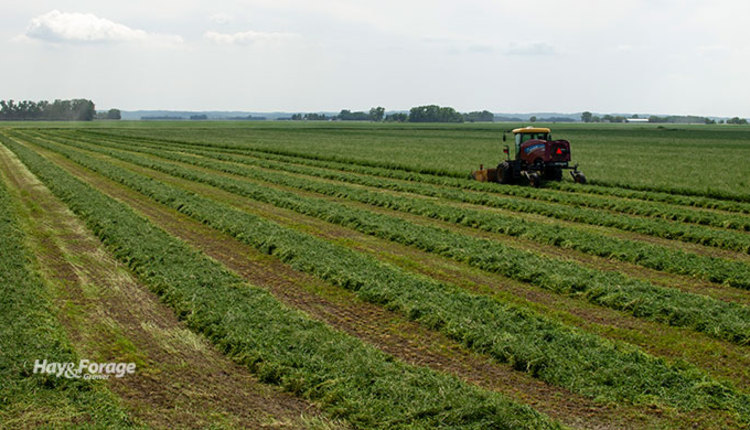
Cutting height can severely affect forage crops if they are cut too low when being harvested.
Penn State Extension Educator Dwane Miller explains in a blog why cutting heights are so important.
“We need to think about where energy reserves are stored in the crop. For alfalfa, carbohydrates are stored below the ground in the taproot,” he notes. “Grasses store their energy aboveground in the stem base or tillers. Frequent mowing at a close height will continue to deplete these energy reserves, resulting in stand longevity issues.”
Legumes store carbohydrates underground in their taproot, so cutting at 1 inch does not severely affect their energy stores that will be needed for regrowth. On the other hand, grasses store energy aboveground in stem bases and tillers, so cutting at any height will impact the amount of energy it has to begin regrowing.
One of Miller’s goals is to help farmers maximize yield. While some technologies make it seem like you are moving closer to the goal, you may actually be damaging the longevity of your crop.
Disc-type mowers allow you to cut forages very close to the ground. Miller has witnessed several “scalpings” with these machines. Disc mowers do not require that a minimal stubble height be left, such as sickle-bar mowers do.
Cutting too close to the ground can also raise a forage’s ash content. All forages have a natural ash content of about 6%. Mowing too close to the ground, especially with disc-type mowers, can introduce soil into the crop, which Miller notes can increase the ash content by as much as 10 to 12 percentage units for a total analysis of up to 18% ash. Other natural occurrences, such as groundhog holes and unevenness in fields, can also be responsible for a higher ash content.
Miller lists his personal recommendations for cutting heights as follows:
Alfalfa or clover
Cut to a 2-inch minimum. Some literature shows a cutting height of 1 inch will not reduce stand longevity, but remember that this can create a high forage ash content. Also, keep in mind that frequent cutting at early maturity will continue to deplete carbohydrate reserves. One cutting of alfalfa should be allowed to reach the bloom stage each year.
Cool-season grasses (orchardgrass and timothy)
Cut to 4 inches during the establishment year and to a 3-inch minimum during production years. Frequent cutting of cool-season grasses at a low height will continue to deplete energy reserves and severely impact stand longevity.
Mixed stands
Manage for the predominant species. If it’s alfalfa with some grass, then cut to a 2.5-inch minimum. If you have grass with some alfalfa, cut to a 3-inch minimum if you want to keep grass in the stand.

C.J. Weddle is serving as the 2020 Hay & Forage Grower editorial intern. She currently attends Mississippi State University, majoring in agricultural education, leadership, and communications. She grew up on a farm in Vardaman, Miss., where her family raises sweet potatoes and soybeans.

